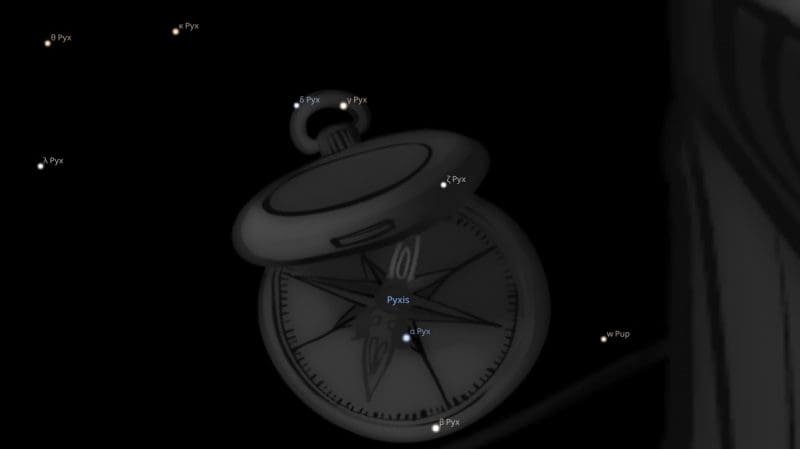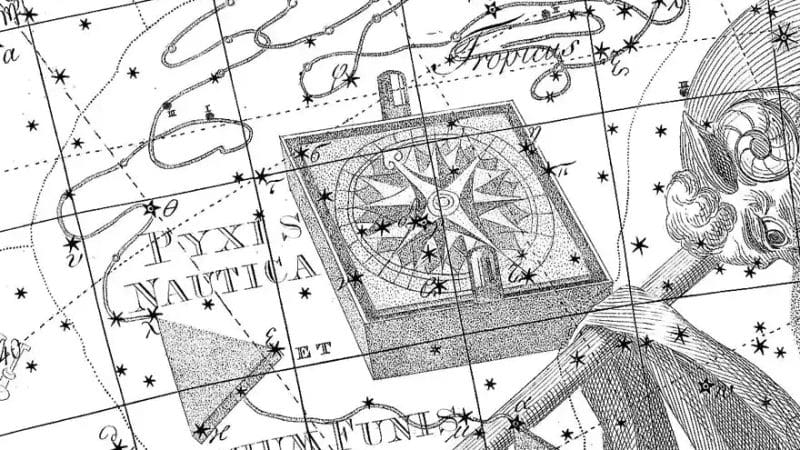FIXED STARS: Major Stars | 1000+ Stars | Constellations | About
Constellation Pyxis, the Mariner’s Compass, is a southern constellation bordering Puppis, Vela, Antlia, Hydra and the obsolete constellations Argo Navis and Felis.Pyxis was introduced by Nicolas-Louis de Lacaille in 1752 and remains one of the 88 modern constellations. It spans 14 degrees of the zodiac in the Signs Leo and Virgo.
Pyxis Constellation Stars
| 2000 | 2050 | Star | Name | Sp. Class | Mag. | Orb |
|---|---|---|---|---|---|---|
| 23♌20 | 24♌02 | ζ Pyx | G5 | 4.86 | 1°00′ | |
| 25♌28 | 26♌10 | γ Pyx | K3 | 4.02 | 1°20′ | |
| 26♌30 | 27♌12 | α Pyx | Al Sumut | B1 | 3.68 | 1°40′ |
| 26♌48 | 27♌30 | β Pyx | G5 | 3.97 | 1°30′ | |
| 26♌52 | 27♌34 | δ Pyx | A3 | 4.87 | 1°00′ | |
| 29♌24 | 00♍06 | κ Pyx | K4 | 4.62 | 1°00′ | |
| 03♍04 | 03♍46 | θ Pyx | Tiānmiàoyī | M0 | 4.71 | 1°00′ |
| 05♍02 | 05♍44 | λ Pyx | G8 | 4.71 | 1°00′ |
α Pyx is named Al Sumut, from the Arabic السموت al-sumūt, “path” or “direction” of the compass. [1]
θ Pyx has the Chinese name 天廟一 Tiānmiàoyī, “1st star in Celestial Temple.” [2]
Pyxis Astrology
Robson
History. Formed by La Caille in 1752 from stars in the mast of Argo.
Influence. It is said to give a wise, ambitious and steady nature, good judgment and interest in nautical and geographical matters. [3]
Allen
Pyxis was formed by La Caille from stars in the Mast of Argo, and so associated with the Ship, although there, of course, it is an anachronism.
Baily reannexed it to Argo, since four of its members had been placed by Ptolemy where La Caille found them, so that for a time it fell into disuse; but Gould inserted it in his Uranometria Argentina of 1879, with sixty-six stars from 3.8 to 7th magnitudes. [4]
References
- Alpha Pyxidis – Wikipedia.
- List of Chinese Star Names – Wikipedia.
- Fixed Stars and Constellations in Astrology, Vivian E. Robson, 1923, p.58.
- Star Names: Their Lore and Meaning, Richard H. Allen, 1889, p.348.

